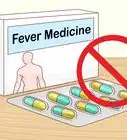This article was co-authored by Pippa Elliott, MRCVS. Dr. Elliott, BVMS, MRCVS is a veterinarian with over 30 years of experience in veterinary surgery and companion animal practice. She graduated from the University of Glasgow in 1987 with a degree in veterinary medicine and surgery. She has worked at the same animal clinic in her hometown for over 20 years.
There are 8 references cited in this article, which can be found at the bottom of the page.
This article has been viewed 31,028 times.
Feline upper respiratory illness (URI) affects a cat’s mouth, nasal passages, upper airway, and possibly the eyes.[1] It is usually caused by one or more infectious agents. Two viruses—feline herpes virus-1 (FHV-1) and feline calicivirus (FCV)—commonly cause feline URI; Bordetella and Chlamydia are bacteria that can cause feline URI.[2] Feline URI can make your cat feel pretty miserable, so it is best to treat your cat as soon as you notice signs of the disease. The sooner you treat your cat, the sooner she will feel better and get back to her normal activities.
Steps
Detecting Feline URI
-
1Look at your cat’s eyes and nose. Discharge from the eyes and nose is one of the most common signs of feline URI.[3] The discharge may look clear in the early stages of disease, then become yellow and pus-like as the disease progresses. Your cat’s eyelids may also become red and inflamed.[4]
- The pus-like discharge would indicate a bacterial infection.
- A URI caused by Chlamydia can make your cat’s eyes water.[5]
- A URI caused by FHV-1 can lead to corneal ulcers.
-
2Examine your cat’s mouth. Feline URI can cause sores to develop in and around your cat’s mouth. For example, you may see sores in the roof of her mouth, on her tongue, or on her lips.[6] Your cat may start to drool; this is usually associated with FHV-1.[7]
- FCV commonly causes oral ulcers.
Advertisement -
3Observe your cat’s sneezing. Sneezing is another common sign of feline URI. Sometimes, excitement or physical activity can trigger sneezing. You may see the nasal discharge when your cat sneezes.
-
4Take note of any changes in appetite. Feline URI can make a cat feel lousy. It can also cause nasal congestion, which would make it hard for your cat to smell and taste the flavor of her food. As a result, your cat may start eating and drinking less than usual.[8] The loss of appetite is usually more severe with FHV-1 than FCV.[9]
-
5Take your cat’s temperature. Feline URI, whether bacterial or viral, often causes a fever.[10] You can take your cat’s temperature rectally or via the ear—whichever your cat is most comfortable with. Keep in mind that digital ear thermometers are difficult to position within the ear and may not provide accurate temperature readings.[11]
- With FHV-1, fever can reach as high as 105 degrees F (40.5 degrees C). Usually, the body temperature then drops to between normal (100.4 to 102.5 degrees F/37.8 to 39.2 degrees C) and 103 degrees F (39.4 degrees C).
- If you do not feel comfortable taking your cat’s temperature, your vet will do so.
-
6Take your cat to your vet. When your cat is showing the telltale signs of a URI, take her to your vet. Often, a diagnosis of URI can be made based on the clinical signs. If your vet wants to determine the infectious agent causing the disease, they will perform other diagnostic tests, including an analysis of the discharge from your cat’s eyes, nose, or throat. Your vet may also take a small skin sample (a ‘conjunctival scrape’) from the inside of your cat’s eyelids.[12]
Treating Your Cat’s URI
-
1Treat your cat’s eyes. Your vet will prescribe either eye drops or eye ointment. If the discharge coming from your cat's eyes suggests a bacterial infection, your vet will prescribe an antibiotic-containing eye medication. If your cat’s eyes have corneal ulcers, then medicated eye drops would be needed. Apply the eye medication exactly as prescribed.
- Since discharge can be irritating, regularly wipe the discharge away from your cat’s eyes with a clean, moist tissue.[15] Remove nasal discharge as well. Be gentle when wiping away the discharge.
-
2Give your cat antibiotics. If your vet has identified the specific bacterial agent causing the URI, then they will prescribe an antibiotic to target that bacteria. Sometimes, though, bacterial infections can occur after a viral infection has weakened the immune system; these infections are called secondary bacterial infections. If your cat has a secondary bacterial infection, your vet will prescribe a broad-spectrum antibiotic that would target a wide range of bacteria.[16]
- Follow the prescription instructions exactly to kill all of the bacteria and prevent antibiotic resistance.
- Your vet may prescribe an oral antibiotic for your cat, rather than antibiotic eye drops.[17]
-
3Place your cat in a humid room. If your cat’s nose or airways are congested, she may benefit from some extra humidity. Turn on the shower in your bathroom, close the door, and let the room become steamy. Then, place your cat in the bathroom for 10 to 15 minutes. Do this several times a day to help relieve her congestion.[18]
- If you’d like, stay in the bathroom with your cat to provide her with some comfort.
- You could also place your cat in a non-steamy room with a humidifier.[19] Speak with your vet about how long to keep your cat in a room with a humidifier.
-
4Consider giving your cat a nasal decongestant. Your vet may prescribe a nasal decongestant to relieve your cat’s congestion. Be aware, though, that long-term use of decongestants may actually cause recurrent congestion and make your cat’s symptoms worse. In addition, nasal decongestants for cats haven’t shown much benefit.
- Humidifying your cat’s environment may be better for your cat than giving her a decongestant.
- Medications are also available that can break down extremely thick discharge or reduce the amount of discharge. Your vet can recommend which nasal medications would work best for your cat.
-
5Encourage your cat to eat. Your cat’s congestion has likely reduced her sense of smell and appetite. To encourage her to eat, feed her an especially tasty and strongly-scented canned food. If she still isn’t interested in eating, your vet may have to prescribe an appetite stimulant for her.[20]
- Consider placing a small morsel of food on your finger and allowing your cat to lick the food off your finger. Placing the food on your finger would warm up the food with your body temperature and possibly release some appealing aromas.[21]
- Force feeding has been suggested to get a cat eating again, but it may not be a good idea—your cat may end up biting you. Talk with your vet before attempting any force feeding techniques (e.g., syringe feeding, placing food in the mouth by hand).[22]
Warnings
- Feline URI is very contagious. If you have multiple cats, wash your hands between handling each cat. Also, regularly disinfect all food and water bowls, toys, and litterboxes by soaking them in a diluted bleach solution (1/2 cup bleach per 1 gallon of water).[27]⧼thumbs_response⧽
- Feline URI can cause serious illness. If your cat is severely ill, she will need to be hospitalized and receive more intensive treatments (e.g., intravenous fluids, extra oxygen).⧼thumbs_response⧽
- Force feeding your cat could cause her to develop a food aversion, since she would associate force feeding with illness.[28]⧼thumbs_response⧽
References
- ↑ http://www.peteducation.com/article.cfm?c=1+2134&aid=210
- ↑ http://www.vcahospitals.com/main/pet-health-information/article/animal-health/feline-upper-respiratory-infection/4102
- ↑ http://www.peteducation.com/article.cfm?c=1+2134&aid=210
- ↑ http://www.vcahospitals.com/main/pet-health-information/article/animal-health/feline-upper-respiratory-infection/4102
- ↑ http://www.petmd.com/cat/conditions/respiratory/c_ct_chlamydiosis
- ↑ http://ocpetinfo.com/edu/disease/furi#1963
- ↑ http://www.peteducation.com/article.cfm?c=1+2134&aid=210
- ↑ http://www.vcahospitals.com/main/pet-health-information/article/animal-health/feline-upper-respiratory-infection/4102
- ↑ http://www.peteducation.com/article.cfm?c=1+2134&aid=210
- ↑ http://ocpetinfo.com/edu/disease/furi#1963
- ↑ http://www.petplace.com/article/cats/first-aid-for-cats/nursing-care-for-sick-cats/how-to-take-your-cats-temperature
- ↑ http://www.vcahospitals.com/main/pet-health-information/article/animal-health/feline-upper-respiratory-infection/4102
- ↑ http://www.peteducation.com/article.cfm?c=1+2134&aid=210
- ↑ http://www.petmd.com/cat/conditions/respiratory/c_ct_chlamydiosis?page=show
- ↑ http://www.vcahospitals.com/main/pet-health-information/article/animal-health/feline-upper-respiratory-infection/4102
- ↑ http://www.vcahospitals.com/main/pet-health-information/article/animal-health/feline-upper-respiratory-infection/4102
- ↑ http://www.petmd.com/cat/conditions/respiratory/c_ct_chlamydiosis?page=show
- ↑ http://www.vcahospitals.com/main/pet-health-information/article/animal-health/feline-upper-respiratory-infection/4102
- ↑ http://ocpetinfo.com/edu/disease/furi#1963
- ↑ http://www.vcahospitals.com/main/pet-health-information/article/animal-health/feline-upper-respiratory-infection/4102
- ↑ http://icatcare.org/advice/how-guides/how-encourage-your-cat-eat
- ↑ http://www.pets.ca/cats/articles/feeding-sick-anorexic-cats/
- ↑ http://www.vcahospitals.com/main/pet-health-information/article/animal-health/feline-upper-respiratory-infection/4102
- ↑ http://ocpetinfo.com/edu/disease/furi#1963
- ↑ http://www.vcahospitals.com/main/pet-health-information/article/animal-health/feline-upper-respiratory-infection/4102
- ↑ http://www.peteducation.com/article.cfm?c=1+2134&aid=210
- ↑ http://www.peteducation.com/article.cfm?c=1+2134&aid=210
- ↑ http://icatcare.org/advice/how-guides/how-encourage-your-cat-eat
About This Article
To treat feline upper respiratory illness in your cat, take it to the vet whenever you notice common symptoms, including discharge from its eyes or nose, mouth sores, sneezing, and a loss of appetite. If the vet diagnoses your cat with the condition, they will prescribe some antibiotic eye drops or ointment to give your cat. Even if your cat’s symptoms start improving, you should follow the full prescription in order to kill off the infection completely. To help your cat as it recovers, gently wipe away any discharge from its eyes and nose with a clean, moist tissue. You can also encourage it to eat by giving it a strongly scented canned food or getting a prescription for an appetite stimulant from your vet. For more help from our Veterinary co-author, including how to place your cat in a humid room to help its congestion, keep reading!
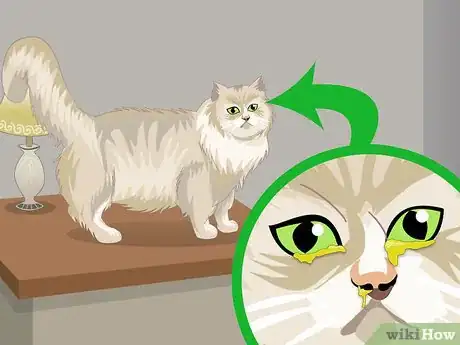
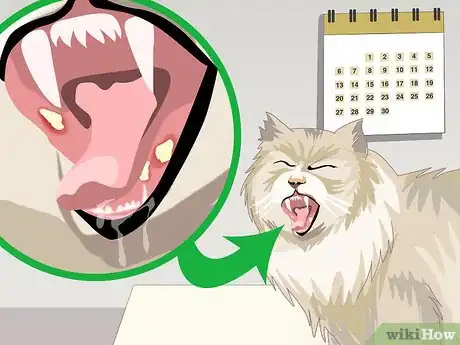
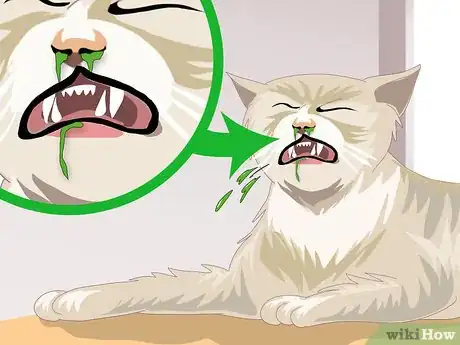
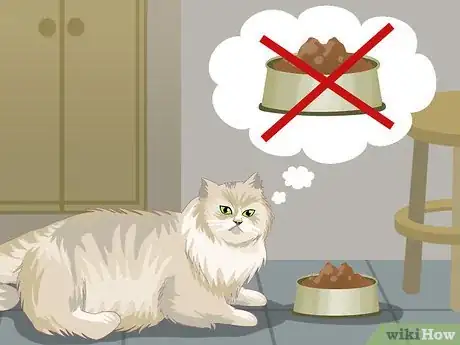
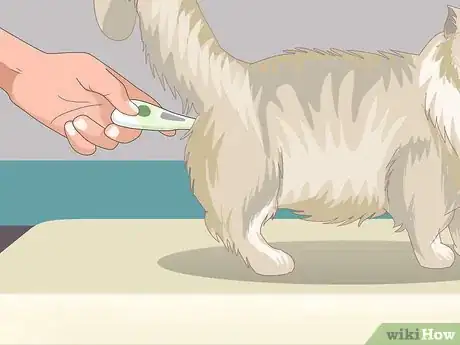
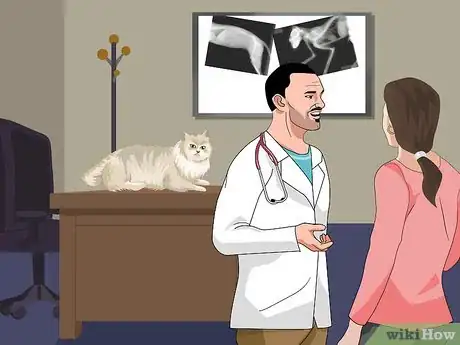
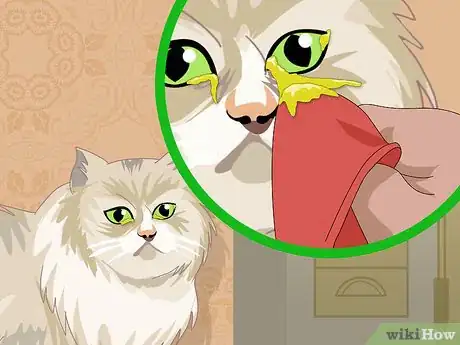
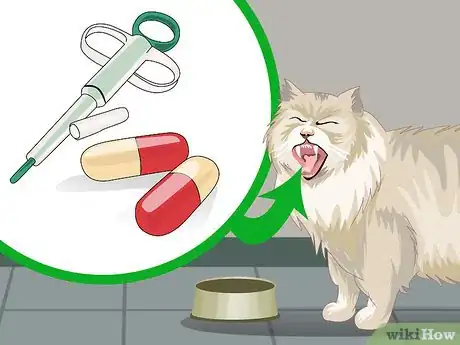
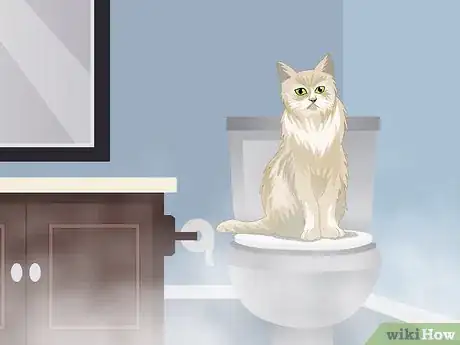
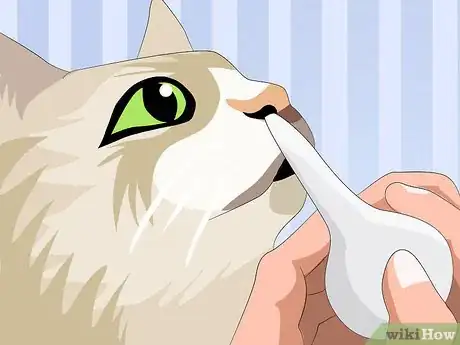
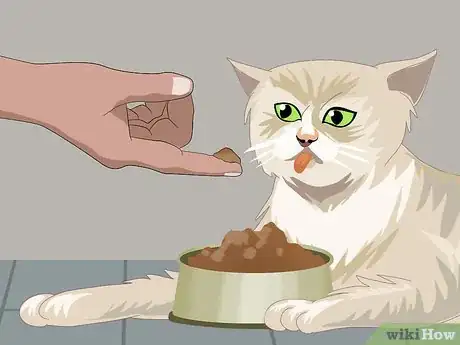
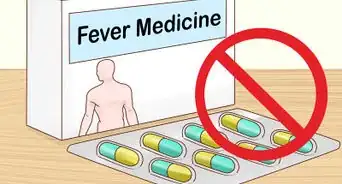
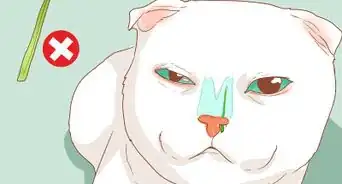


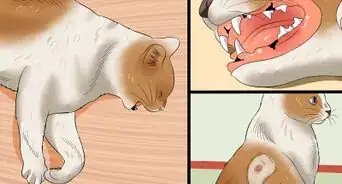

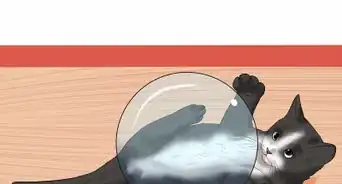
-Step-18.webp)
-Step-12.webp)


-Step-10.webp)







